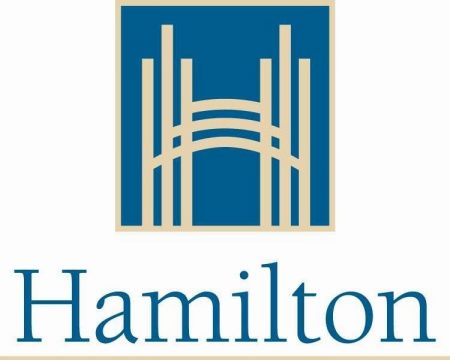Summary
Located in the community of Flamborough within the City of Hamilton, Flamborough Centre Park is where Conservation Halton restored an under-used park into a treed wetland, as it would have appeared and functioned in its natural state. This project was designed to reduce flooding, provide wildlife habitat, increase opportunities for recreation and improve the quality of water flowing into Grindstone Creek.
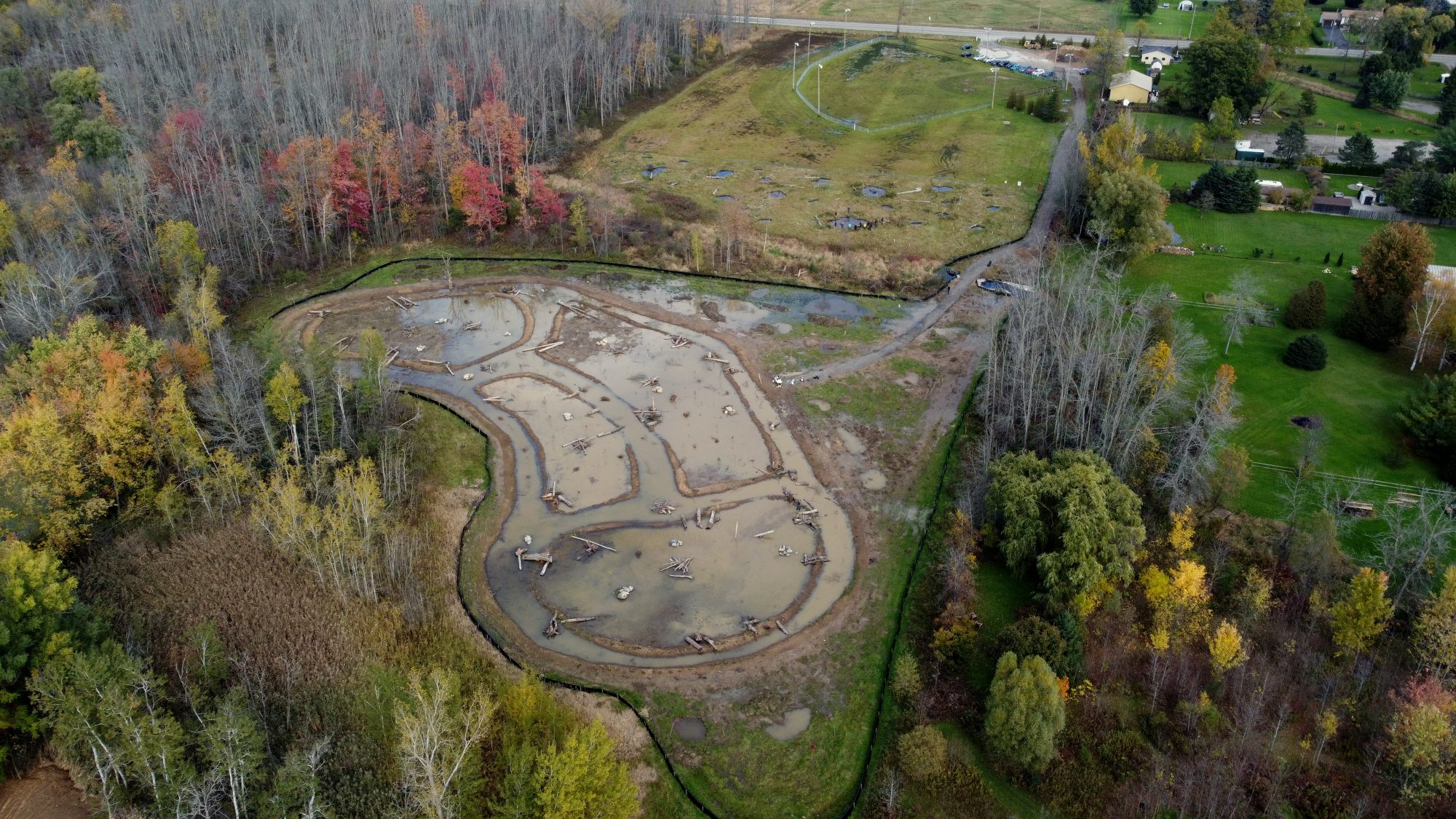
Background
Flamborough Centre Park, which is owned by the City of Hamilton, has a “seasonally high water table.” This means that the area is prone to flooding, which has made it difficult for the community to use the park for recreation, and it has been a challenge for the city to maintain the park. Before the area was turned into a park, it was a swamp, which is a wetland with specific kinds of trees—deciduous, in this case. Conservation Halton partnered with City of Hamilton to restore a small part of the area to this swamp ecosystem, in order to reduce flooding and create habitat for wildlife.
Restauration
The restoration area at Flamborough Centre Park is 3.3 hectares (8.1 acres) of the park. In order to return the area to its natural state as a treed wetland, Conservation Halton removed a portion of the topsoil, created a number of shallow wetlands, added “pit and mound” features, and planted the area with native species that are tolerant of wet ground conditions.
Pit and Mound Forest
The first phase of the restoration at Flamborough Park started with the creation of 0.5 hectares (1.2 acres) of “pit and mound” reforestation. The “pit and mound” approach is used to create the kind of topography that would be found on the floor of an old growth forest, which would take decades to establish on its own. Naturally, this landscape would be created when trees with shallow roots were uprooted during a storm. As a result, the raised mass of roots and soil would become a mound, and then fill with water to form a pit. Conservation Halton created 30 small “pit and mounds” and two larger “pit and mounds,” each with a slightly different shape and size to provide a more natural appearance.
Wildlife Habitat
After the “pit and mounds” were created, a series of wildlife habitat features were installed. Salvaged wood debris, such as logs and branches, were placed around the “pit and mound” features as amphibian egg attachment sites. This wood debris will serve as natural habitat for wildlife, and when it breaks down as organic matter, it will provide nutrients to the soil. Conservation Halton also installed a number of bird boxes and perching poles for birds to use for resting and feeding.
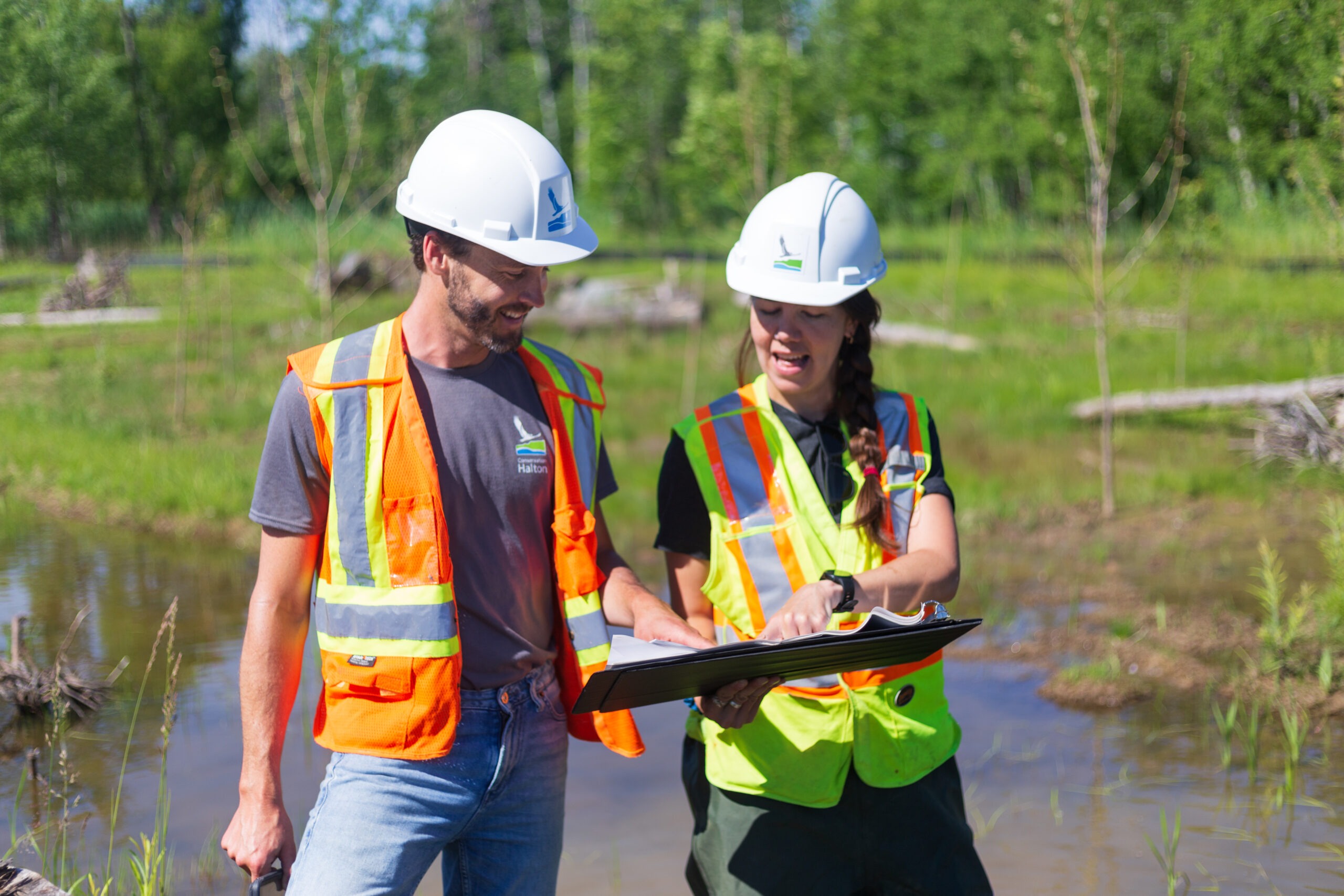
Shallow Wetland
Phase 2 of restoration activities at Flamborough Park began in 2021. First, with the help of environmental consultants, a deeper wetland with a larger footprint was designed. During the summer, groundwater levels are usually low, so the wetland will be dry. During the spring and fall, groundwater levels are higher, and the wetland will be wet.
Habitat features, such as sunning logs and brush piles, were added to the wetland area for native species to rest, lay their eggs and hide from predators. The native trees and shrubs that were planted in the area around the wetland will attract insects, which will provide food for amphibians, birds, and turtles. Also, large wood debris, like tree trunks, branches and logs, will provide habitat for a range of organisms, including plants, mosses, lichens, insects and small animals.
Conservation Halton planted more than 1,200 native wetland plants, such as Marsh Marigold and White Turtlehead, and more than 1,500 trees and shrubs in the area surrounding the new wetland. These native species will help to further reduce flooding through the process of “evapotranspiration,” which is the release of water vapor by plants into the atmosphere.
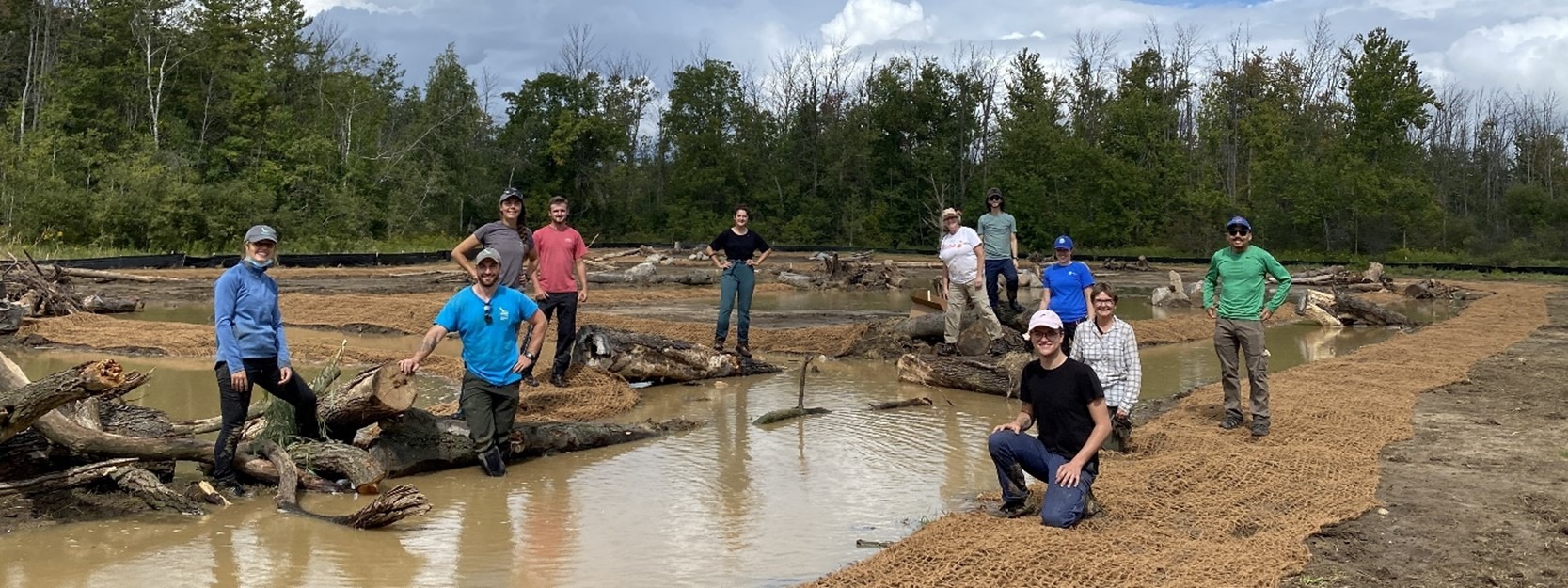
Carbon
To simulate the conditions of a natural wetland, organic material like wood debris and “biochar,” was added to the soil. Biochar is a charcoal-like substance made by burning organic material, which helps wetlands to support water-purifying microbes and does not decompose, so carbon remains locked into the soil.
Installation Schedule:
- Phase 3 – 2022
- Phase 4 – 2023
Conservation Halton is working to restore an additional 1.6 hectares of Flamborough Centre Park into a treed wetland ecosystem over a two-year period. (This area is the front half of the park, where the former baseball diamond used to be.) As with previous phases, these will include the creation of a number of small wetlands and “pit and mound” features throughout the park to hold rainwater and groundwater. The wetlands and other features will be constructed at various depths to provide habitat conditions for wetland vegetation and wildlife.
Bat Habitat
Two “roosting poles” for bats will be installed at Flamborough Centre Park as part of the restoration project. Habitat loss is a major threat to bat populations in Ontario, but these poles will help increase habitat available for them to raise their young. Bats play an important role in the ecosystem by helping to pollinate important food crops, spread seeds, and manage pests.
A variety of native trees, shrubs, wetland plants, nuts and seeds were planted throughout the site at Flamborough Centre Park. It is estimated that after construction is complete, there will be:
- 10,000+ native wetland plants, trees and shrubs planted
- 3,200 herbaceous plants planted
- 42 kilograms of native seed mix scattered
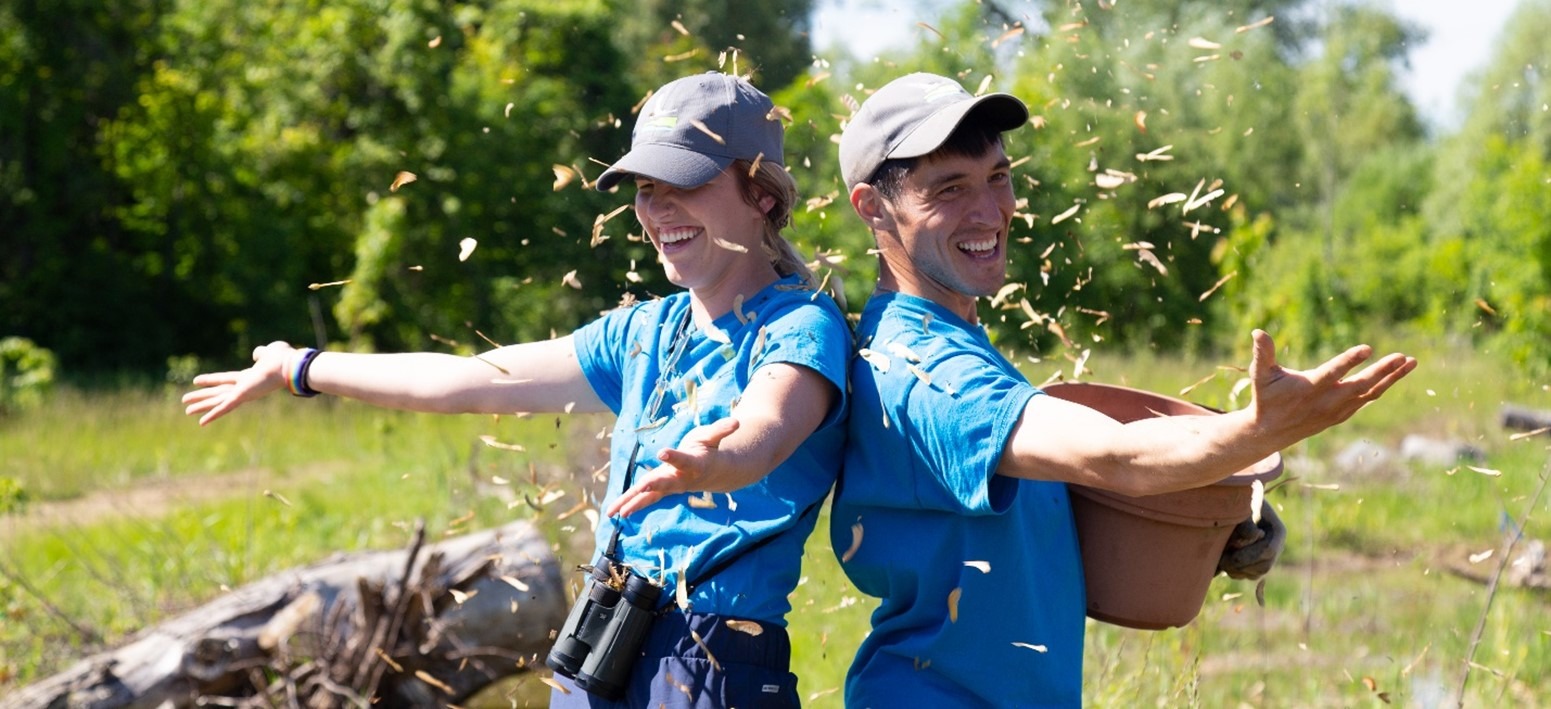
| Trees | Shrubs | Wildflowers and Wetland Plants | Nuts |
| Silver Maple | Highbush Cranberry | Swamp Milkweed | Swamp White Oak |
| Eastern White Cedar | Spicebush | Cardinal Flower | Burr Oak |
| American Sycamore | Nannyberry | Wild Bergamot | Swamp White x Burr Hybrid |
| Trembling Aspen | Red Osier Dogwood | Spotted Joe-Pye Weed | Shagbark Hickory |
| Red Maple | Various Willows | Blue Flag Iris | |
| Trembling Aspen | Black Chokeberry | Boneset | |
| Bur Oak | Common Ninebark | Buttonbush | |
| Shagbark Hickory | Winterberry | Blue Lobelia | |
| Eastern Cottonwood | Elderberry | Lady Fern | |
| Yellow Birch | White meadowsweet | Cinnamon Fern | |
| Swamp White Oak | Swamp red currant | Marsh Marigold | |
| Bitternut Hickory | Speckled Alder | Square-Stemmed Monkey Flower | |
| Common Hackberry | Arrowhead | ||
| Paper Birch | Bur Reed |
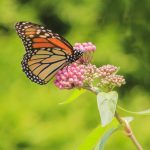
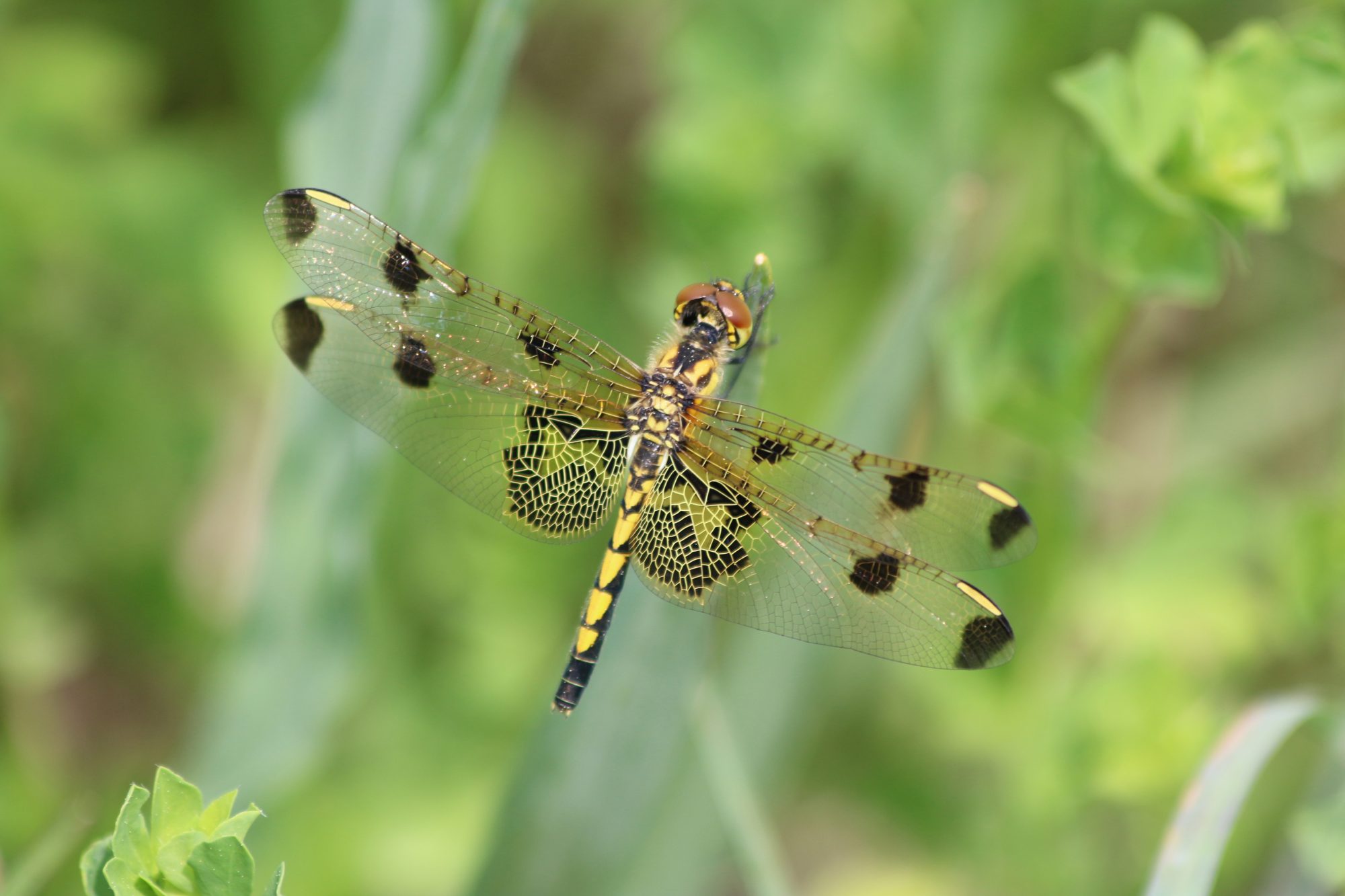
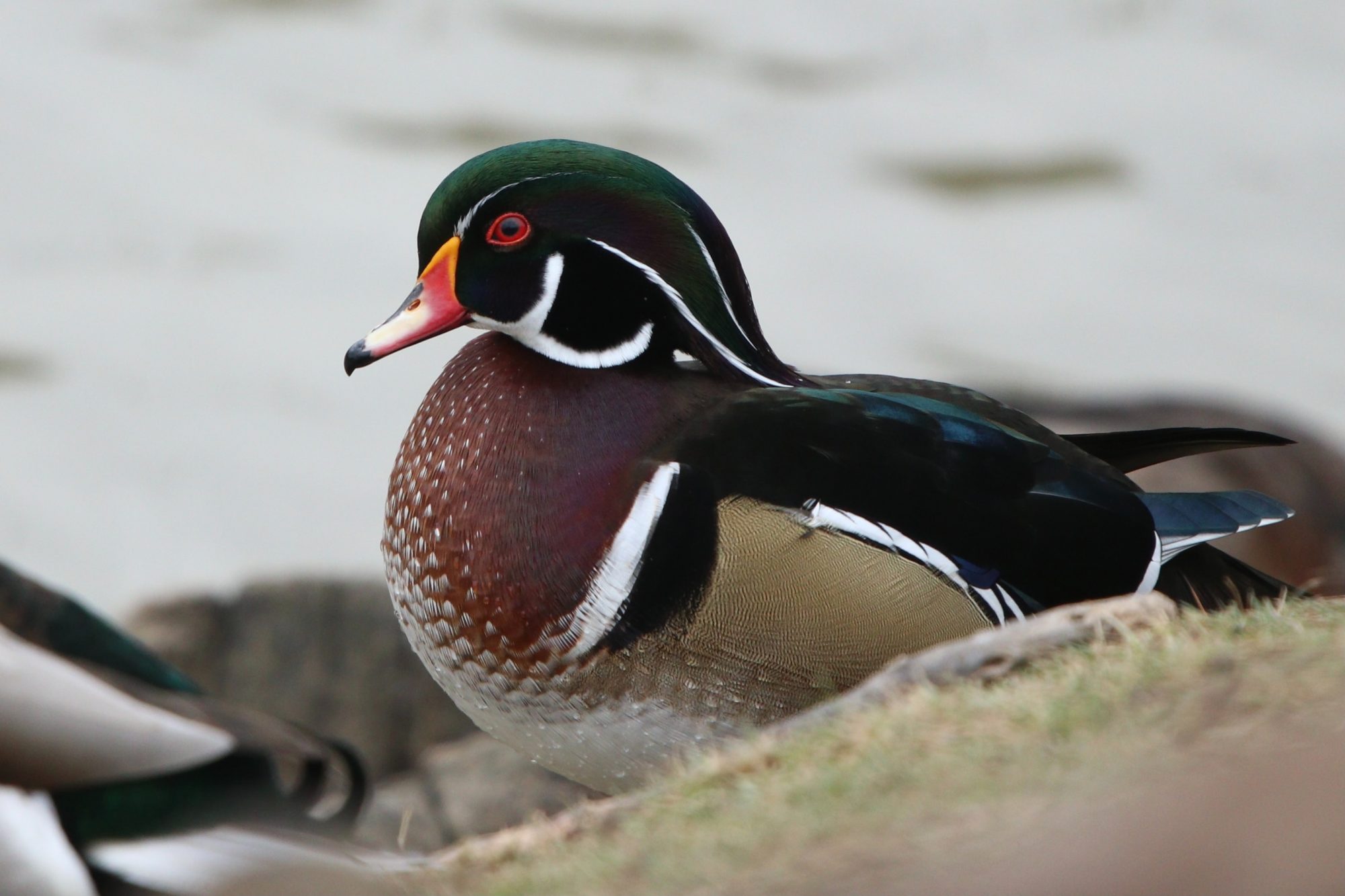
The Big Picture
Estimates suggest that the amount of wetland in Ontario has decreased by more than 80 percent. Wetlands are an important part of a healthy watershed, and provide valuable ecosystem services, such as reducing flooding, preventing erosion, protecting our drinking water, providing habitat for wildlife and creating opportunities for recreation. The restoration at Flamborough Centre Park underscores the critical role that wetlands have in providing these services, and their ability to strengthen our resilience to climate change.
In 2022, a report on the benefits of natural assets in the Grindstone Creek watershed found that each hectare of deciduous swamp provided an average of $2 million dollars’ worth of ecosystem services every year in the form of stormwater management, erosion control, carbon sequestration, habitat services, atmospheric regulation and recreation opportunities. This means that in the future, the restoration project at Flamborough Centre Park will produce $6.5 million worth of ecosystem services every year.
Moving forward, Conservation Halton will be monitoring the new wetland to inform decisions on adaptive management, invasive species management and ensuring the wetland is set up for success as it continues to mature.
Please contact us at restoration@hrca.on.ca if you have questions, comments, or would like to be added to the project mailing list.
- March 30, 2023 – Greenbelt Foundation Blog
- August 16, 2021: Flamborough Review
- September 11, 2020: The Bay Observer
- July 30, 2020: Greenbelt Foundation Funding Announcement
- June 25, 2020: The Flamborough Review
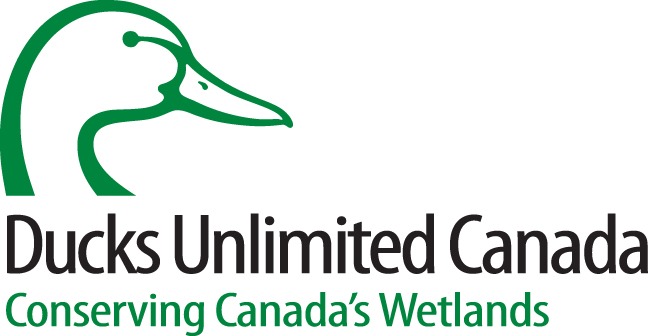
This project was also funded by the Province of Ontario, Natural Resources Canada, and Wildlife Preservation Canada. Such support does not indicate endorsement by the Government of Ontario of the contents of this material.
(Conservation Halton is responsible for managing and implementing Phase 3 and 4 of the project on behalf of a third-party. Funding for this portion of the project is provided by the third-party to offset impacts to a nearby ecosystem.)

